4:30 pm CT | May 11, 2018
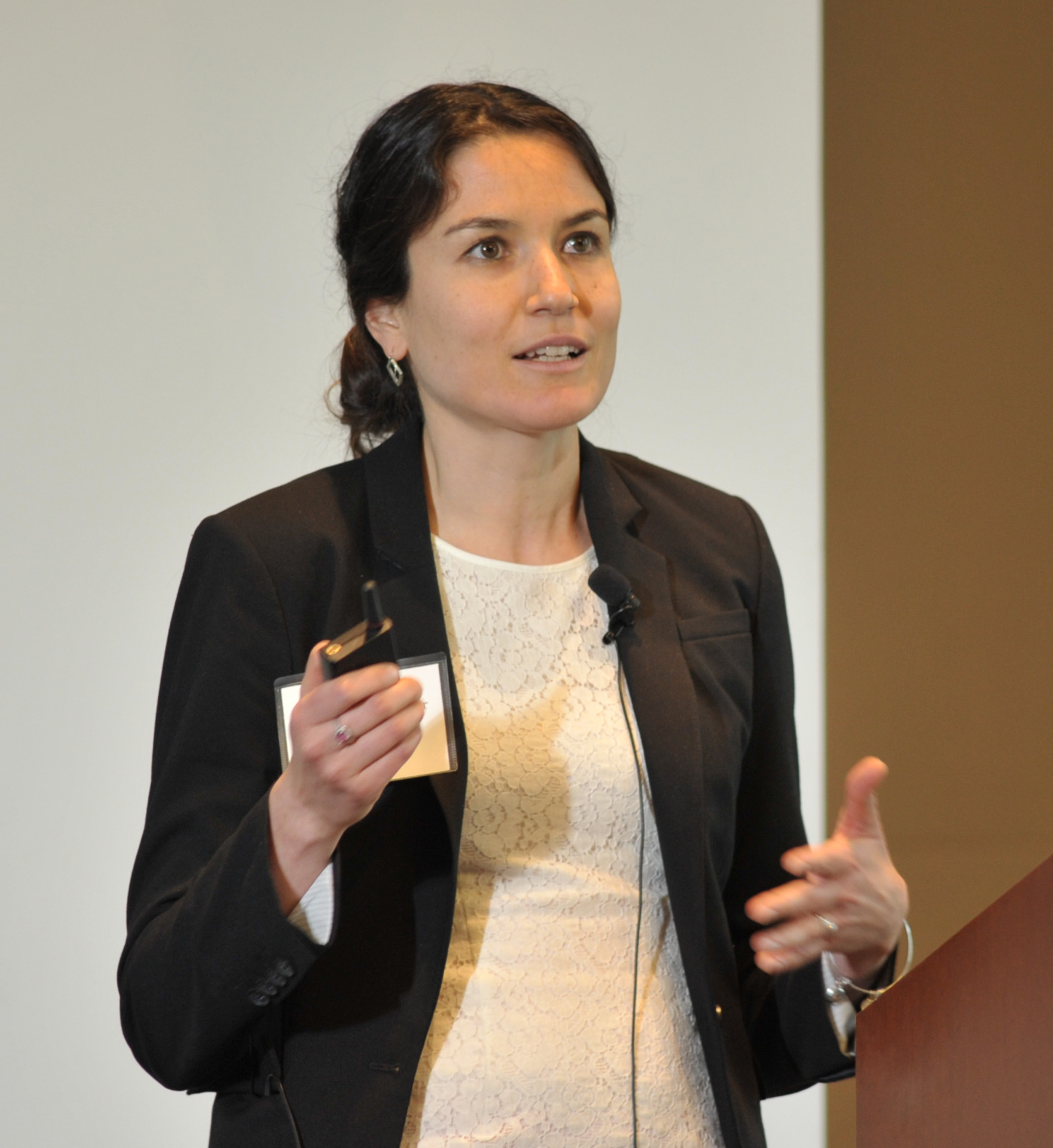
The final speaker of the day, Stanford’s Maya Rossin-Slater, presented research on paid family leave (PFL). Results from a study of PFL policy introduced in California in 2004 that allowed new parents to take up to 6 weeks of time with partial wage replacement to bond with a baby (in addition to disability leave for mothers). The evidence suggests that this policy increased the frequency of leave-taking and the duration of leave compared to the unpaid leave available under the Family and Medical Leave Act, and that these effects were larger for lower-income families who are much less likely to take unpaid leave. This is important because the evidence also suggests that PFL improved future labor market outcomes: mothers who took PFL had a higher employment rates, work hours and wages in the months and years following childbirth. There is also evidence that introducing PFL policies benefit children through, for example, lower stress before and after birth and higher rates of breastfeeding. However, evidence from other countries suggests that while introducing PFL has these benefits, expanding existing programs doesn’t necessarily increase them. Finally, there is some limited evidence that PFL policies do not come at a great costs to employers.
4:10 pm CT | May 11, 2018
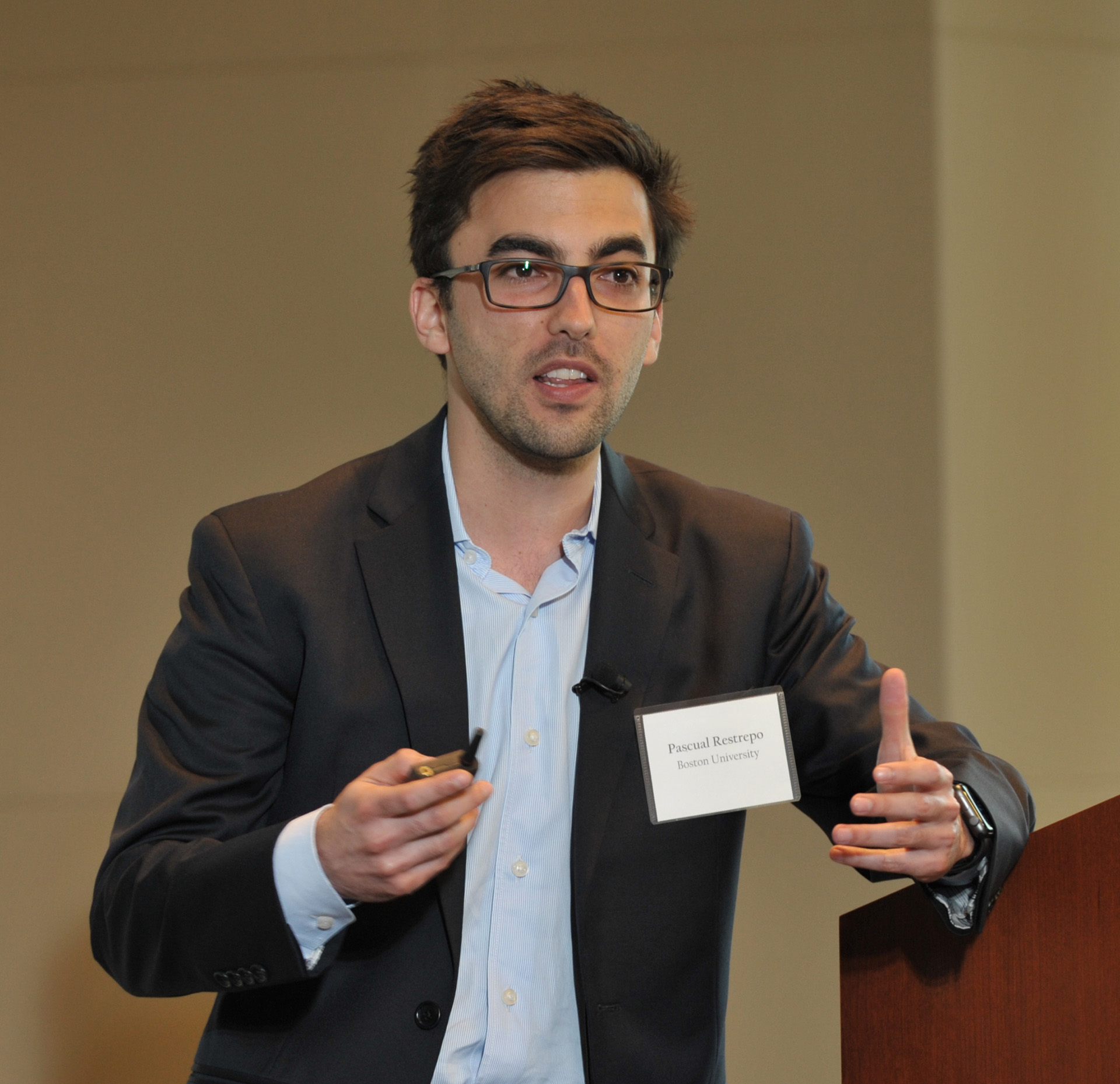
Economist Pascual Restrepo from Boston University spoke about an issue that has received a lot of attention as a source of growing inequality—automation. Automation itself has an ambiguous effect because while robots put some workers out of a job, the resulting increase in productivity should also lead to economic growth that would increase employment and wages. The net effect depends on which jobs are automated; if repetitive, labor-intensive tasks are primarily the ones automated (as might be expected in the initial wave of automation), the productivity gains won’t be as strong. Or, as Restrepo put it after presenting a simple model, “we should fear the mediocre robots and not the very good robots!” Restrepo then turned to the data to explore how these effects have played out in recent U.S. history. Examining the growth in the industrial use of robots and geographic variation across regions of the country over time (Michigan, for example, has seen heavy robot adoption due to the presence of the Auto industry) and looking at the change in the employment, it turns out that the employment to population ratio fell more in regions that more heavily automated. Restrepo concluded optimistically by illustrating how automation can lead to the creation of new tasks at work, thereby creating new jobs.
4:00 pm CT | May 11, 2018
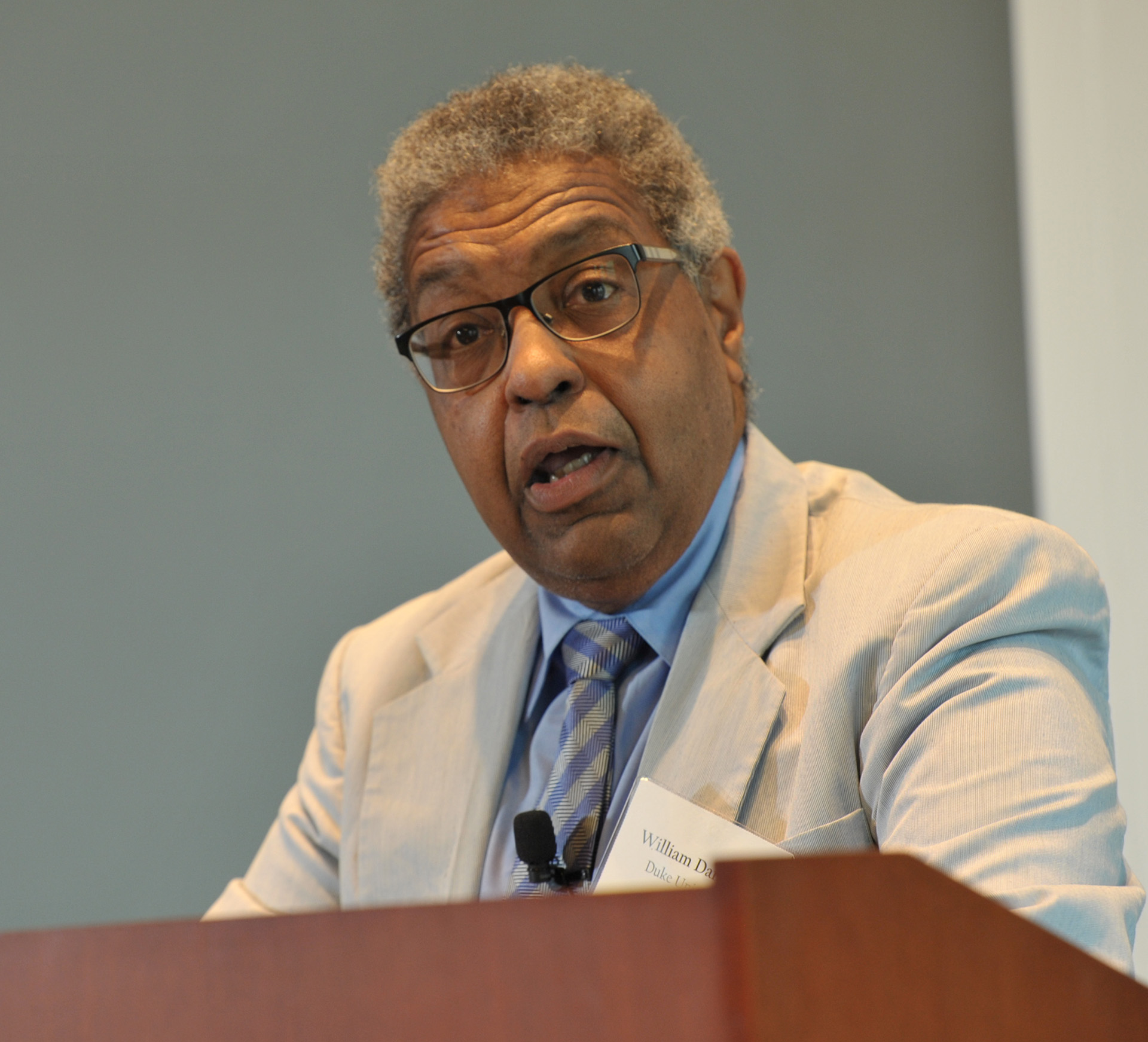
Hamilton’s co-author William Darity, Jr., of Duke University, shifted the focus of the panel from the future of work to the future of opportunity, or rather, shifting from income disparities to wealth disparities. The data show that the black-white wealth gap is even more dramatic than the income gap—the median net worth of black households is zero—and, Darity argued, the gap reflects the cumulative effects of generations of discrimination and institutional racism. The result is that a program of reparations targeted at eliminating the racial wealth gap would come to $18 trillion if accounting for the difference in mean wealth between black and white households. Darity then discussed his proposal, with Hamilton, of “Baby Bonds.” The program, which would establish a trust fund for children at birth inverse to their parents’ wealth, would function as a form of asset or endowment redistribution, as opposed to income redistribution.
3:40 pm CT | May 11, 2018
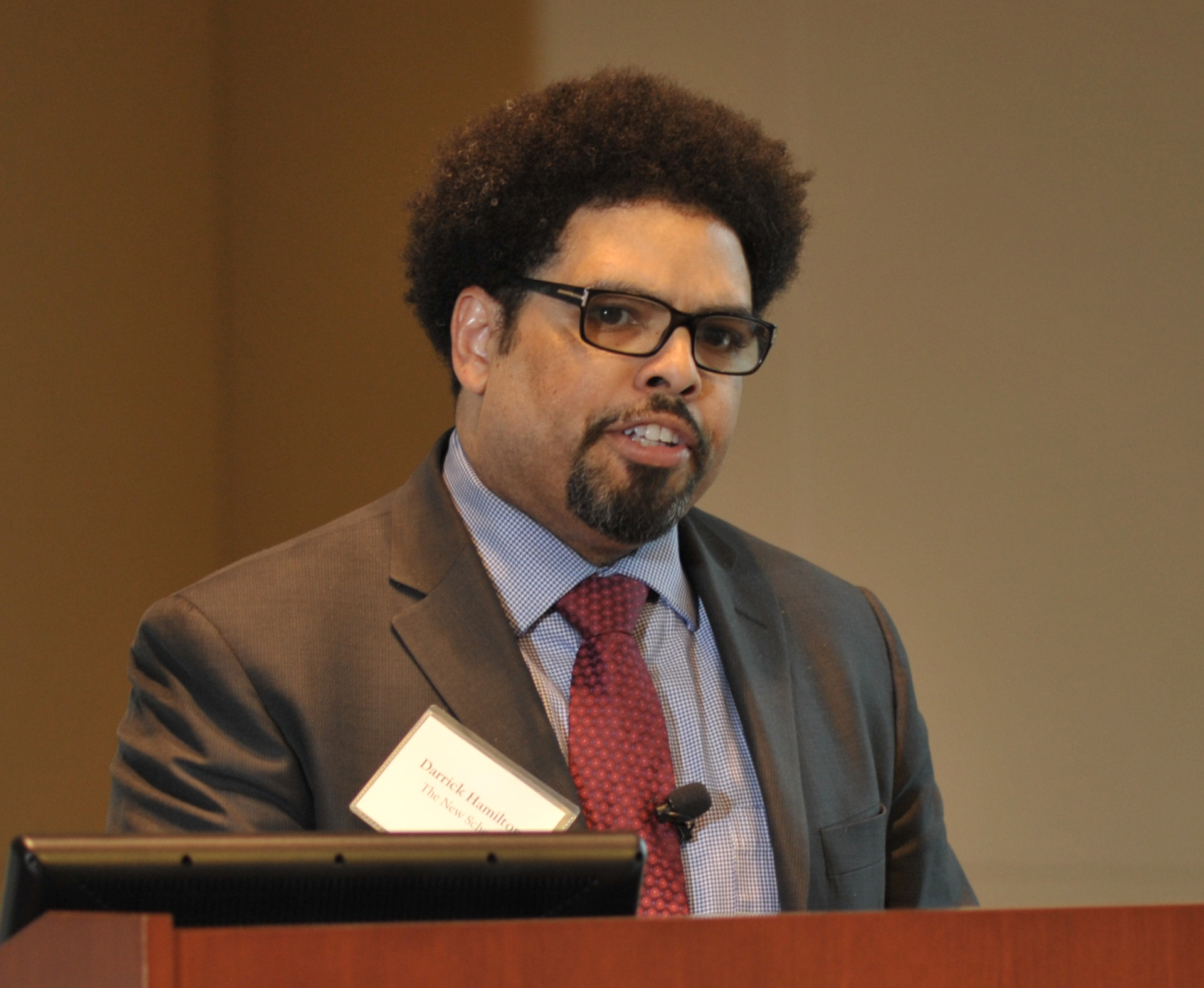
Darrick Hamilton of the New School discussed a proposal, developed along with panelist William Darity, that would establish a permanent federal employment guarantee. This “public option for employment” would have the goal of eliminating working poverty and establishing full employment. While it sounds radical, this isn’t a new idea, having been included, for example, in President Franklin Roosevelt’s “second bill of rights” from his 1944 State of the Union address, along with the enshrinement of full employment in federal law, including the 1978 Humphrey-Hawkins act. Hamilton discussed the role of such a program in eliminating racial disparities in income and wealth. He put a conservative estimate of the cost of the program at $650 billion.
3:25 pm CT | May 11, 2018
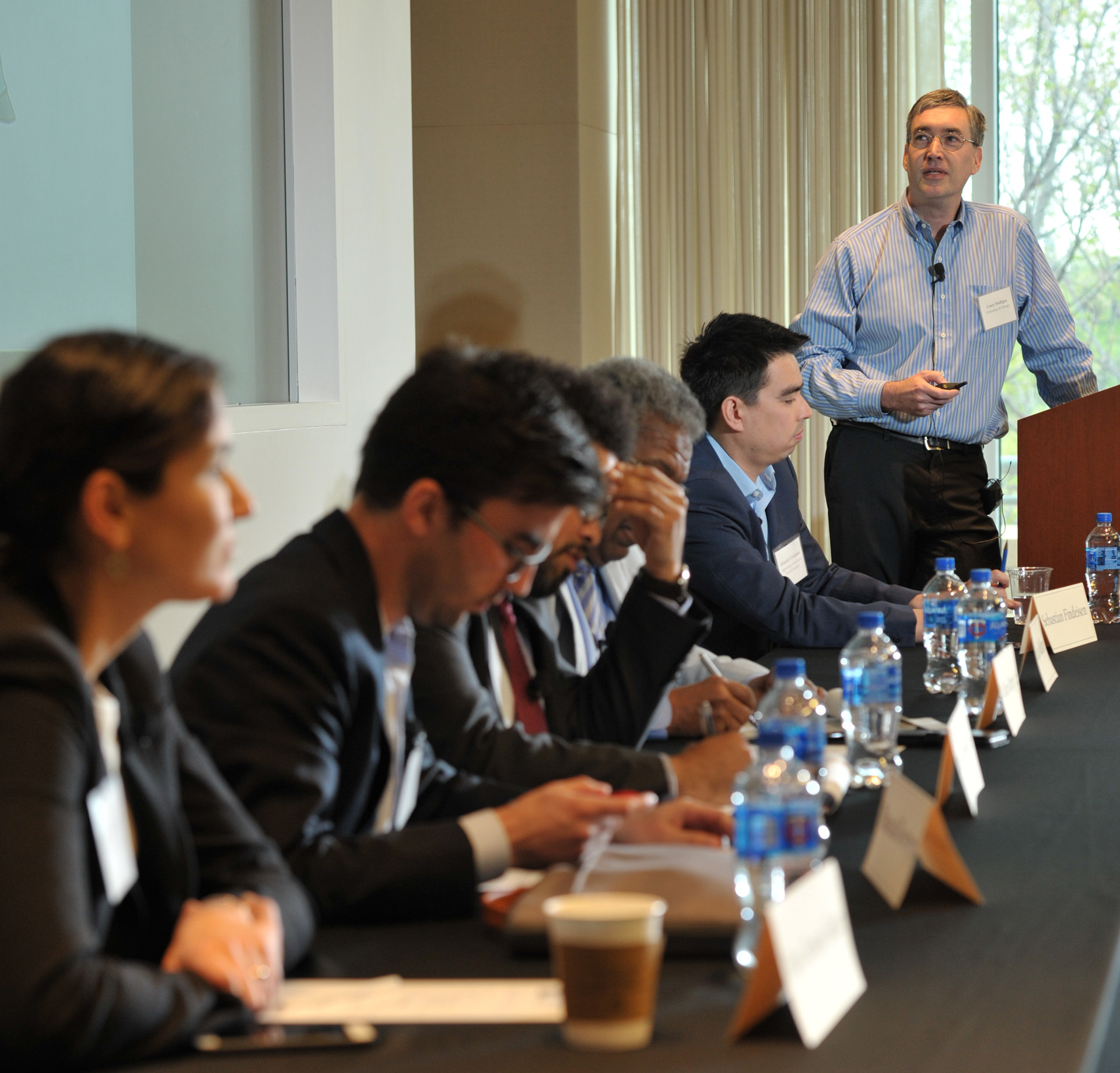
The University of Chicago’s Casey Mulligan presented on public policies and the reward to work, beginning by making the point that as a society we expect the labor market to carry the burden of society’s problems (e.g., rising costs of healthcare, education) via taxes. He then argued that economists underemphasize the importance of incentives to work, particularly taxes on income and employment. Part of the reason for this is that statutory marginal income tax rates don’t appear to have changed tremendously in recent years. However, Mulligan’s data suggest a much greater change in implicit taxes on income and employment—the employer mandate in the affordable care act or extension of unemployment benefits, for example—which penalize work. By presenting the time series of aggregate hours worked, Mulligan argued, you can observe a correlation with the changes in these implicit taxes, such as the end of the post-recession stimulus programs. Recent experience in the United Kingdom compared favorably to the United States, as greater incentives to work (lower taxes) coincided with a faster recovery in hours worked following the great recession. Mulligan concluded by expressing hope that economists would begin to pay more attention to such incentives to work.
2:45 pm CT | May 11, 2018
Livestream | Panel 3: The Future of Work & Welfare
2:30 pm CT | May 11, 2018
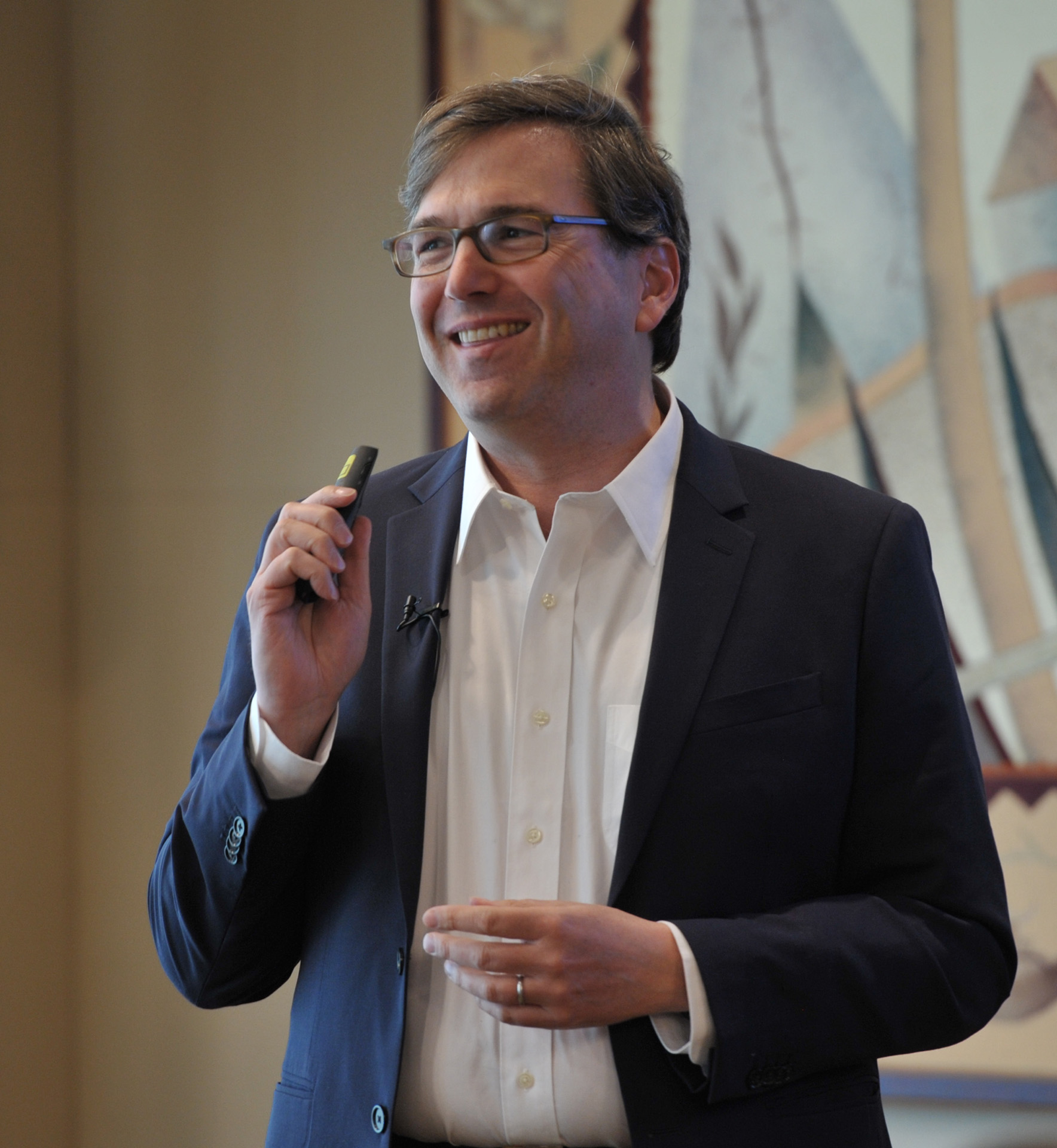
The keynote address was delivered by Jason Furman, Harvard economist and former chair of the Council of Economic Advisers. “Is Government the Problem or the Solution to U.S. Labor Market Challenges?” drew both on his experience within the U.S. government and on current academic research. It began with “The U.S. Grand Bargain?” referring to an accepted understanding that with our (comparatively) free labor market, we’ll accept more inequality in exchange for better employment.
His slides documented that the U.S. has the OECD’s lowest overall market regulation in terms of employment protection legislation, minimum wage relative to median, collective bargaining coverage, and among the lowest levels of disability compensation and unemployment insurance duration. And indeed, we have the OECD’s highest level of inequality, as measured by a Gini index over 40 in 2014.
He noted that this employment problem has been long in the making for American men. The labor force participation rate has been in steady decline from the 1950s to today. Employment rates are similar between whites and Hispanics currently, but lower for African Americans.
Potential explanations? Could be a supply issue: Men no longer want to work. Or demand: No one wants to hire men. Or institutional: markets are missing opportunities, or institutions are destroying them.
In terms of supply, Furman showed that disability can’t explain the majority of the decline in male labor force participation (indeed, fewer people are now receiving disability), and overall government cash benefits have declined. While other government policies, like Medicaid and SNAP have increased, their rise can’t explain employment rate trends. In sum, supply is a slight but not a major factor in explaining low labor force participation.
So perhaps demand is a more compelling explanation. Education is increasingly important, and relative wages have fallen, consistent with a declining demand explanation. But this is true for other OECD nations that haven’t had the same negative results.
In summary, there’s been steady decline in labor force participation rate for prime-age men since the 1950s, largest for those with less than a college education, and this has been worse for the United States than most other advanced economies. And the impacts of this are disturbing: Increased mortality, more smoking, lower happiness, detrimental effects on community and children.
Unfortunately, since around 2000, women have begun to mirror these male trends. After decades of increasing their employment rates, women are now seeing declines and the U.S. is no longer leading the OECD in its female employment-to-population rate. Interestingly, women now outnumber men in higher education, but while labor force participation has increased for all education groups, declines have occurred since 2000 particularly for the less educated. There have been institutional changes that have facilitated increased women’s labor force participation, but some promising trends have stopped or declined. And increased flexibility and leave for women have had unexpected adverse consequences in the U.S.
What are the policy options? Furman mentioned the Big Ideas, such as Universal Basic Income—which he regards as inadequate, expensive and potentially regressive. Another is an employment guarantee: federal jobs for anyone who wants them. He has some sympathy for them, but tends to think we have a poor track record with implementing efficient government labor markets. Wage subsidies are another expensive and complex “big idea” but Furman thinks they hold some promise, because they use market signals effectively.
1:30 pm CT | May 11, 2018
Video | Luncheon Keynote
1:10 pm CT | May 11, 2018
Luncheon

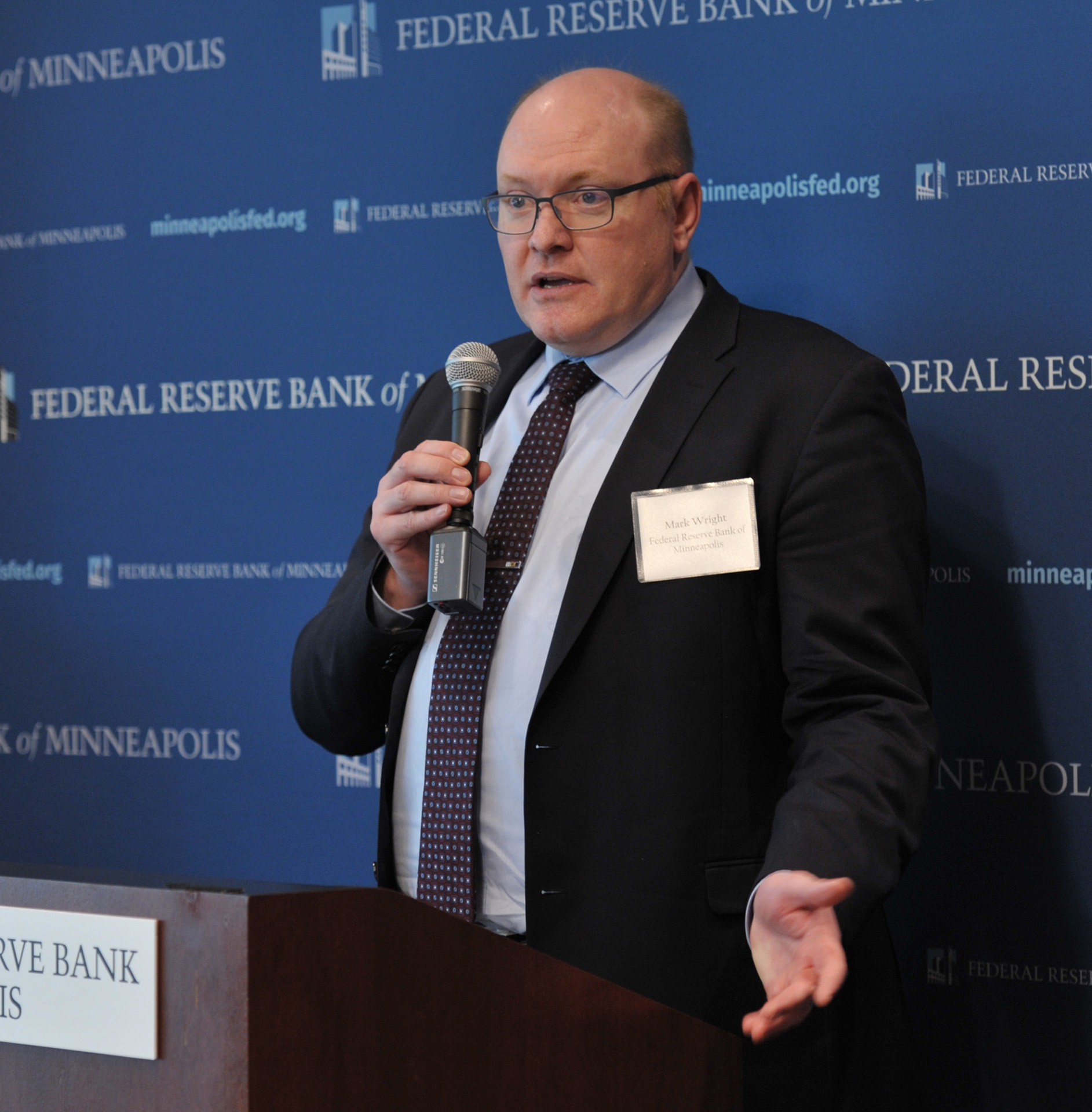
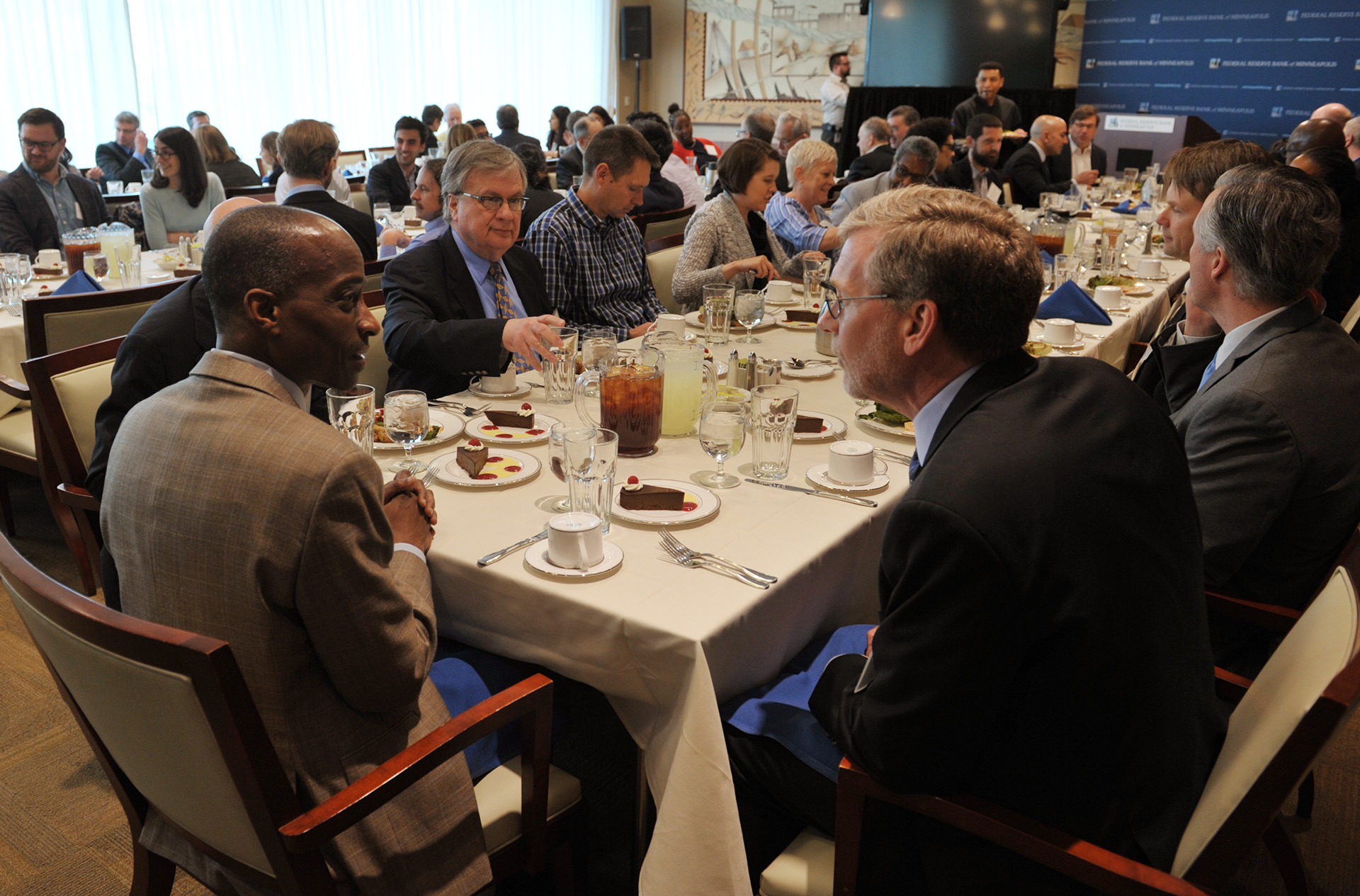
Left to right: President Neel Kashkari and Jason Furman, Mark L. J. Wright, Philip Jefferson and Terry Fitzgerald
12:30 pm CT | May 11, 2018
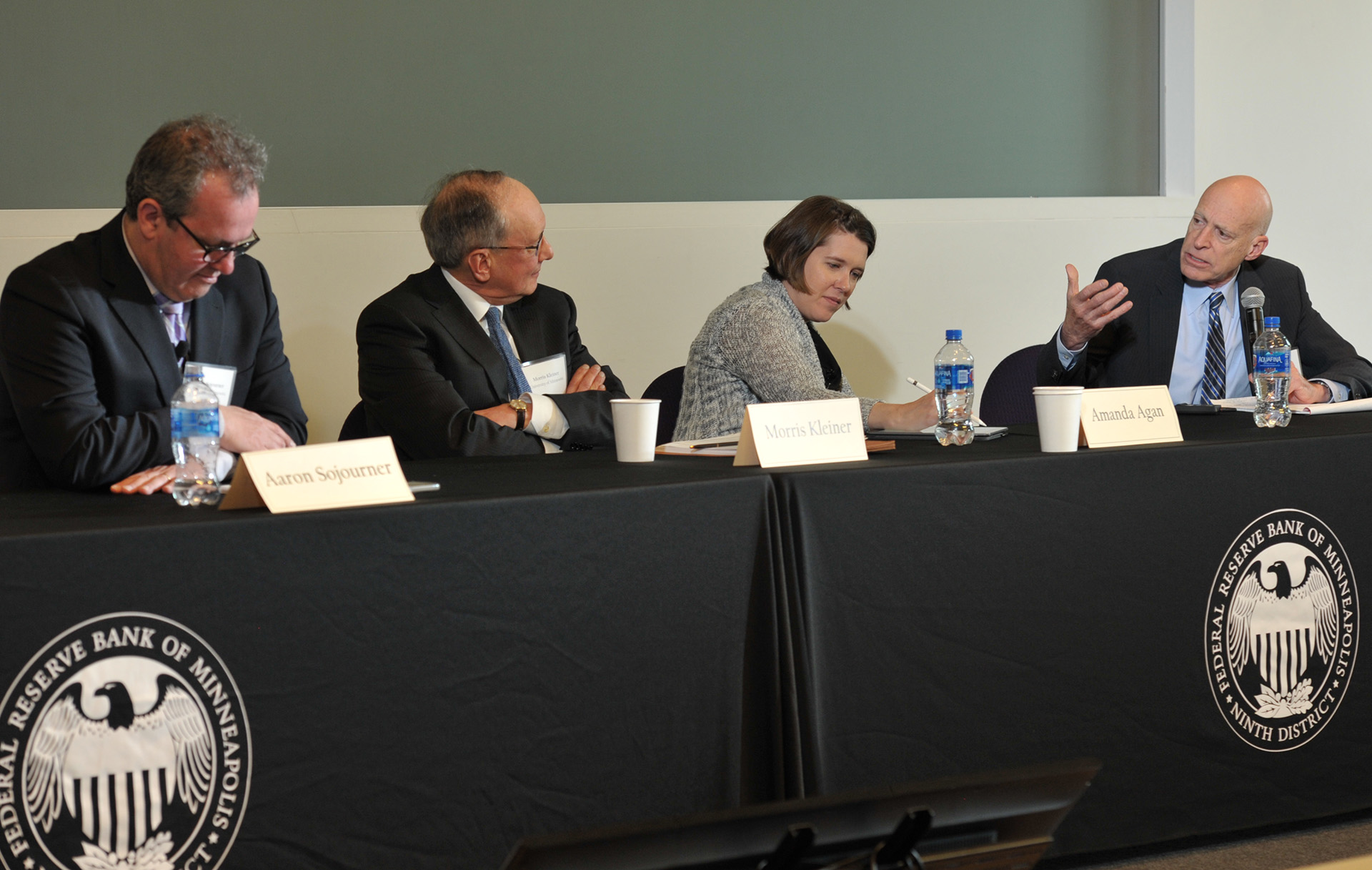
Stanford University’s Edward Lazear summed up the session by asking and answering what unites these talks? “When you create barriers, you create an in-group and an out-group, and then the question is: How difficult is it to move to the in-group? For felons to have opportunities that non-felons have, and for those without licenses to receive the benefits of those with them.
Kleiner spoke more about research on how licensing affects inequality. Commenting on Agan’s research, Sojourner pointed out that even if it worked, Ban the Box legislation wouldn’t really increase opportunity but merely redistributes it. It’s deeply disturbing, he noted, that her research documents how prevalent and powerful racial discrimination is. Agan reinforced Sojourner’s observations. Ban the Box is not a job creation policy. And yes, to the extent that we can enforce discrimination laws, we’ll improve hiring. But she has yet to see any successful efforts to do so. Neel Kashkari of the Minneapolis Fed asked about laws forbidding hiring questions about previous salaries as a means of reducing gender inequality, and Agan discussed current research underway to investigate the effects of such policies. Edin asked about threshold effects on felony records, about licensing effects on supply of workers. Darrick Hamilton observed that redlining, incarceration and credit scores are mechanisms to stratify populations and specifically to create racial differentiation. Policies? Antidiscrimination is a great idea, but doing audit studies could and should be done by the Fed and others to test and see whether discrimination is being practiced. He also spoke of his recent research with Sandy Darity and others, concerning policies, like affirmative action, that provide “a foot in the door.” Audience participants and panelists discussed current hiring policies and practices, and measures that would reduce hiring discrimination.
11:55 am CT | May 11, 2018

Occupational licensing—requiring workers to receive government licenses in order to practice a given occupation—was the focus of University of Minnesota’s Morris Kleiner’s talk. Lawyers in the U.S. are licensed, for example, by attended an approved law school and passing specific exams. There are alternatives, such as certification, or right to title, but licensing is most prevalent, and increasing. In 2015, 25 percent of workers needed licenses, up from 5 percent in 1950, said Kleiner, while unionization has steadily declined, to less than 12 percent from 33 percent. The practice varies across the U.S. with over 30 percent of the workforce of Iowa being licensed by just 12 percent in South Carolina.
Is occupational licensing “grease or sand,” he asked, in labor markets? Does it improve or decrease their efficiency? And what affect does it have on wages, prices, quality and safety? Kleiner’s research and that from others is somewhat mixed, but on balance it suggests that it has raised wages for those with licenses, but increased prices for those receiving services—between 3 and 16 percent higher in health care, 0 to 5.5 percent for mortgage brokers and 4 to 11 percent in dental services (which limits their availability to lower-income individuals.) It also tends to reduce labor market efficiency by impeding interstate migration, since occupational licenses are usually state-specific, a 36 percent migration reduction compared to those in occupations that don’t require licensing. Moreover, licensing appears to have little if any ability to improve quality of services provided, Kleiner reported, suggesting that there is no clear trade-off for the reduction in market efficiency.
Licensing laws often contain overly broad exclusions for people with criminal records, he noted, and can prevent immigrants from applying their skills in the United States.
Future research: influence of licensing on access for individuals with criminal records, its influence on income inequality and its differential racial and gender effects on access and wages.
11:34 am CT | May 11, 2018
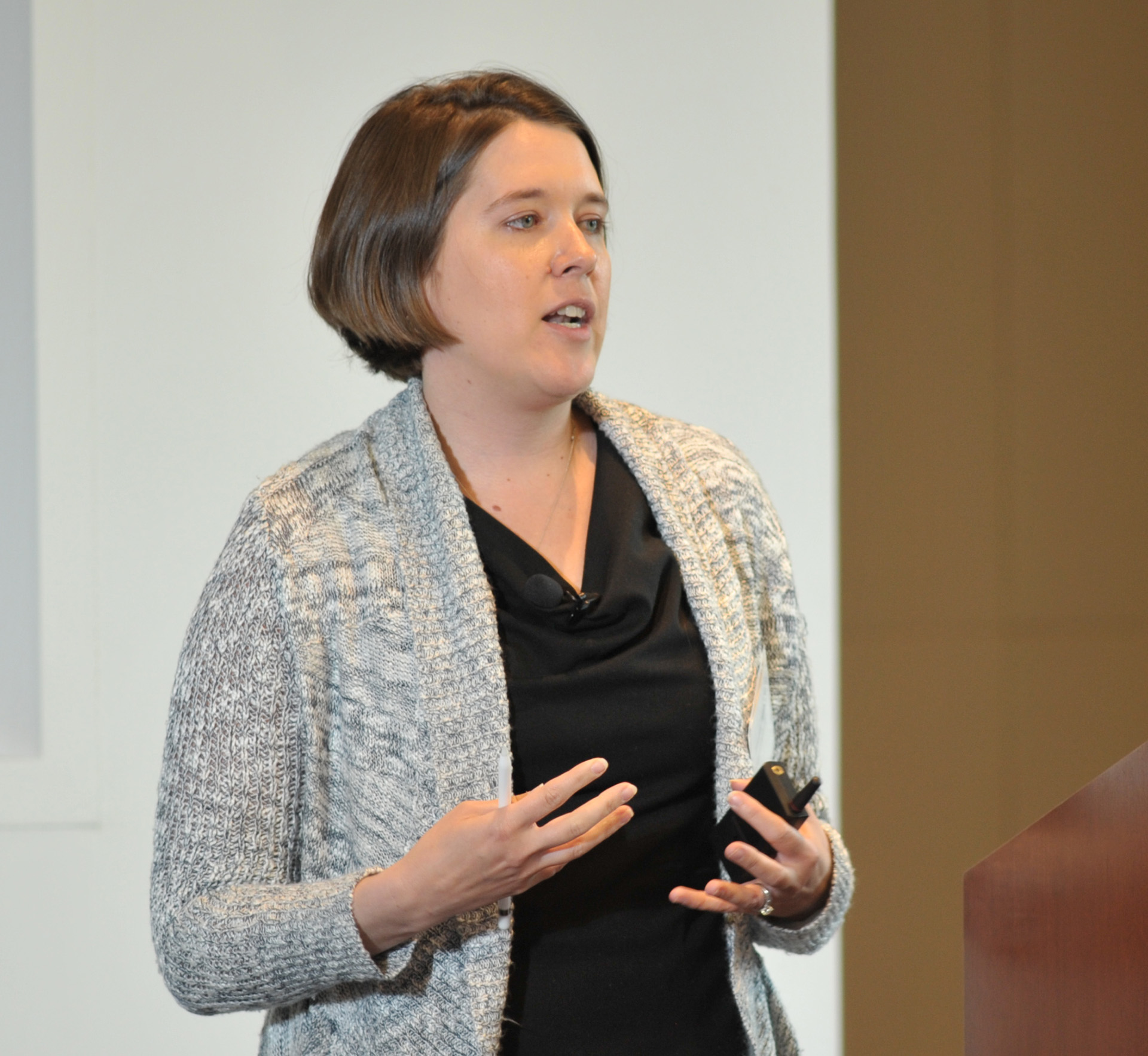
Amanda Agan of Rutgers University spoke about criminal records as an employment barrier. As Aaron Sojourner just indicated, she said, increasing percentage of Americans have prison and felony records, most dramatically for African Americans, at just 5 percent in 1948 but nearly one-fourth in 2010. And for men, the figure is close to one-third. Surveys further show that employers admit they are very reluctant to hire applicants with criminal records. This has led to widely-adopted, well-intentioned efforts, such as “Ban the Box” (or “Fair Chance”) policies that prohibit employers from asking job applicants about their criminal histories, applied mostly to public employers but increasingly to private companies.
While BTB policies are intended to help people with criminal records get their “foot in the door”, and also to reduce racial discrimination in hiring, Agan’s research indicates they may have the opposite effect. Her field experiment—submitting nearly 15,000 online job applications for fictitious young males to employers in New Jersey and New York both before and after their adoption of Ban the box laws—found that applicant call-backs were significantly lower to fictitious applicants who had distinctly black names than those with distinctly white names after the laws were passed, suggesting that employers seemed to rely on exaggerated impressions of real-world racial differences in felony conviction rates. The policy seems to be “exacerbating the problem” it was intended to solve.
“So then the question becomes: What about eventual employment? Research (by others) so far is discouraging, she showed, often finding that employment for young black men without college degrees declines in BTB locales. Other research in BTB jurisdictions linking criminal history with unemployment insurance records in Massachusetts and Seattle finds a slight reduction, or no change, in employment for people with records, but no positive impact.
If BTB policies are counterproductive, what should we do? Agan said this all indicates that more research is needed to understand why employers are so reluctant to hire people with records. A number of other potential policies are being considered, such as criminal record expungement, certificates of rehabilitation, and “wrap-around services.” More research is need, she said, on alternative policies.
11:05 am CT | May 11, 2018
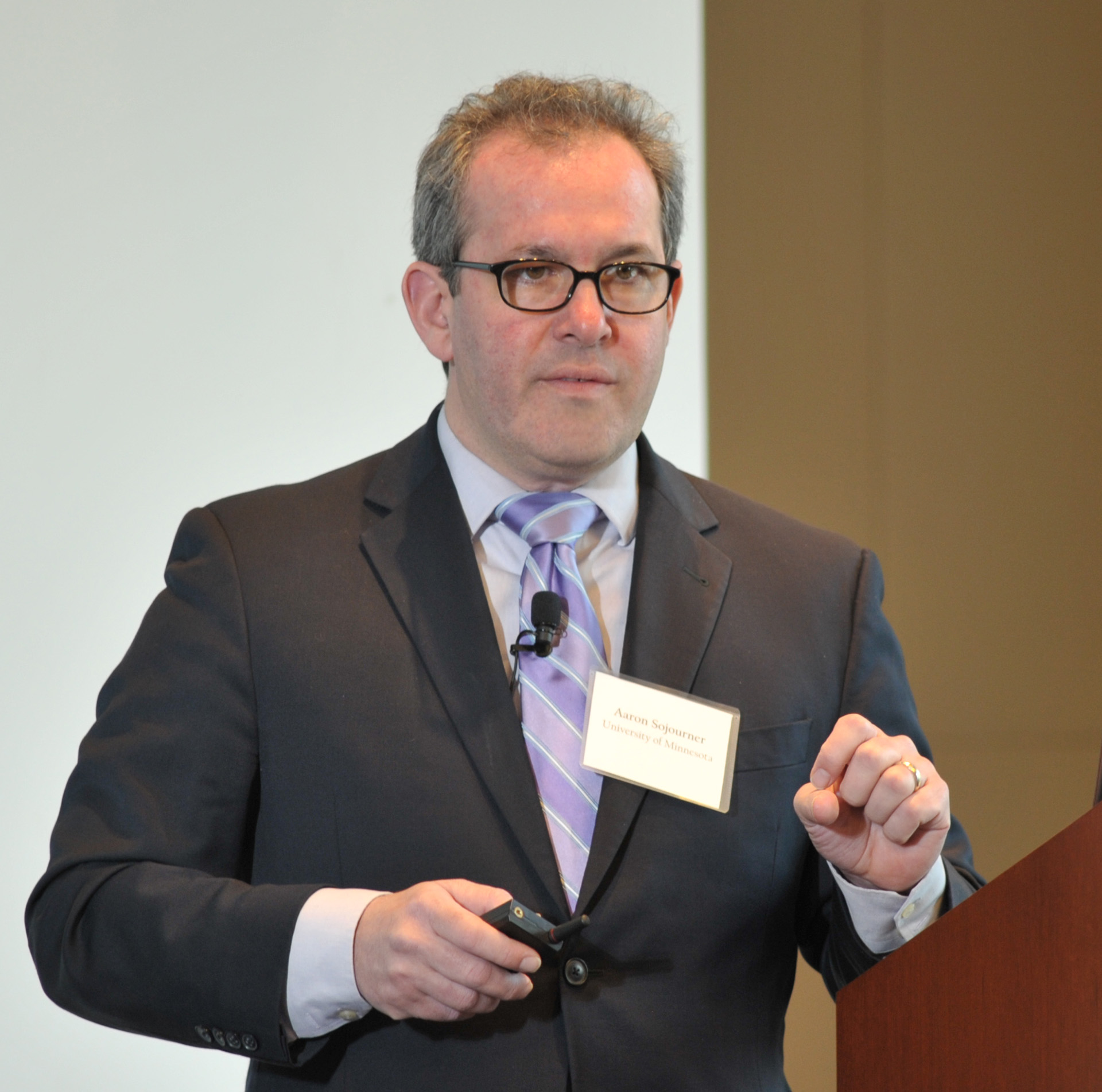
Aaron Sojourner of the University of Minnesota presented preliminary research on whether the rise in Americans living in community with a felony record has been associated with changes in non-employment rates. Specifically, it examines whether states with faster rises of adults with criminal records also have faster increases in unemployment.
He first shared research indicating a rise since 1975 in percentage of US adults who are either incarcerated currently or with felony supervision, but a particularly dramatic increase for those with felony or incarceration histories, from just over 2 percent in 1975 to over 6 percent in 2010. “This issue is particularly severe for African Americans,” he noted. And some states, such as Florida, have particularly high “ex-felon density”.
Is ex-felon density correlated with non-employment? An initial scatterplot shows a rough positive correlation. Regression analysis shows that a 1 percentage point rise in felony-history share is associated with about a 0.29 percentage point change in prime-age not-employed. Still, these results are highly preliminary. He observed that the strong labor market offers a once-in-a-decade opportunity to spread benefits widely and to create community safety without criminalization. Most OECD countries spend far higher percentages of the GDP on active labor market programs, he noted.
10:20 am CT | May 11, 2018
Panel 1 discussion

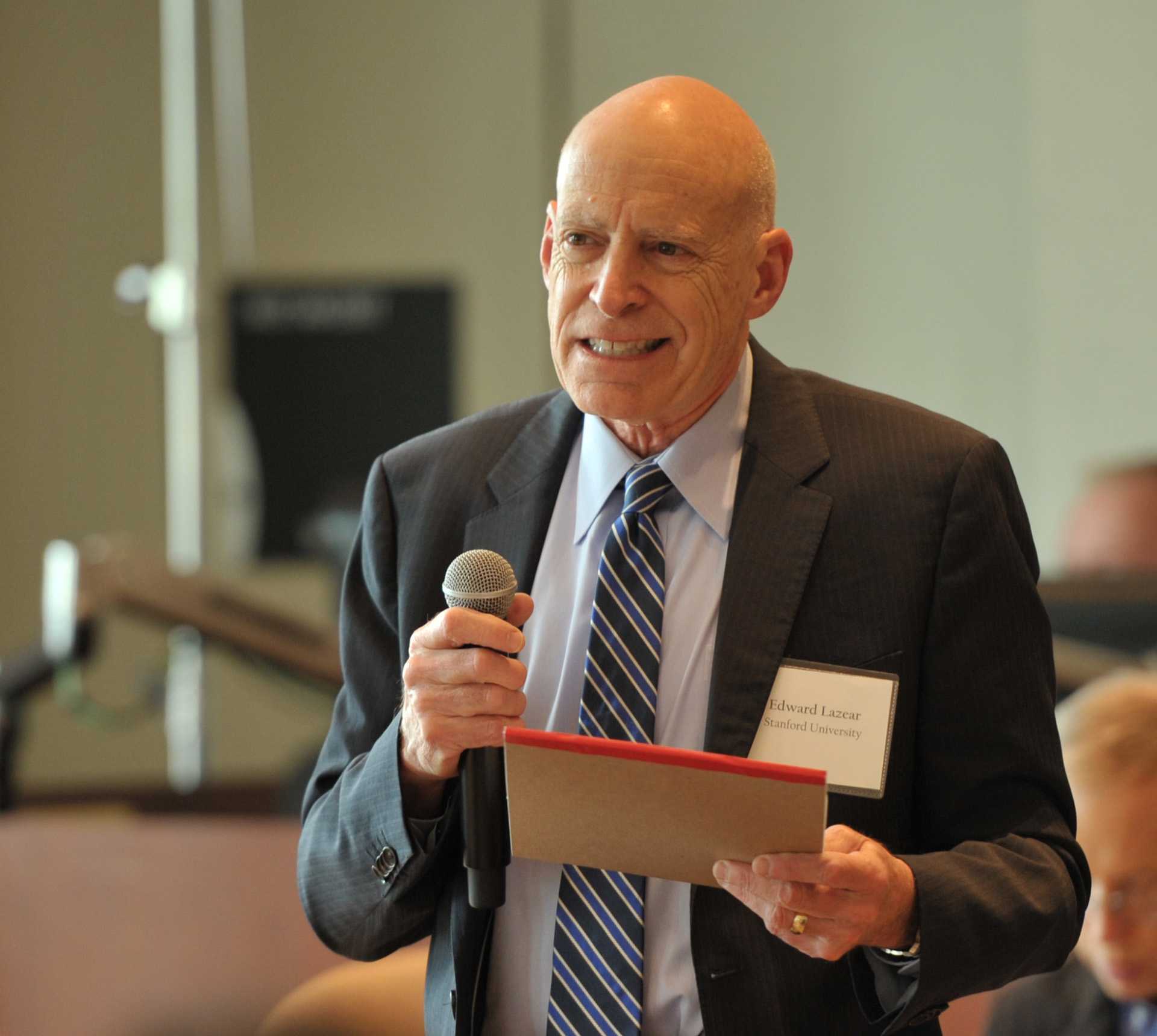
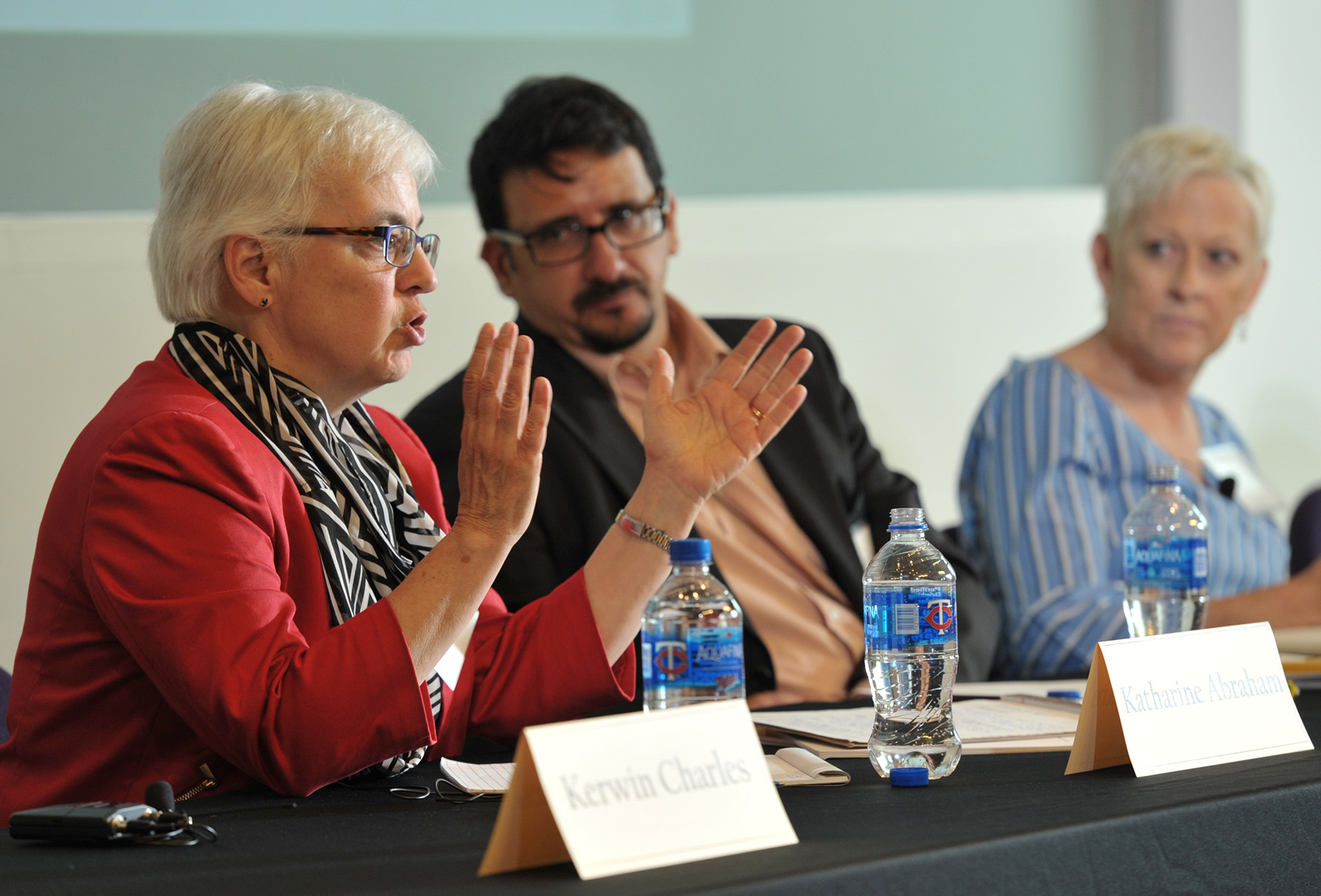
Left to right: Philip Jefferson and William Darity, Jr.; Edward Lazear; Katharine Abraham, Ivan Vidangos, and Kathryn Edin
10:00 am CT | May 11, 2018
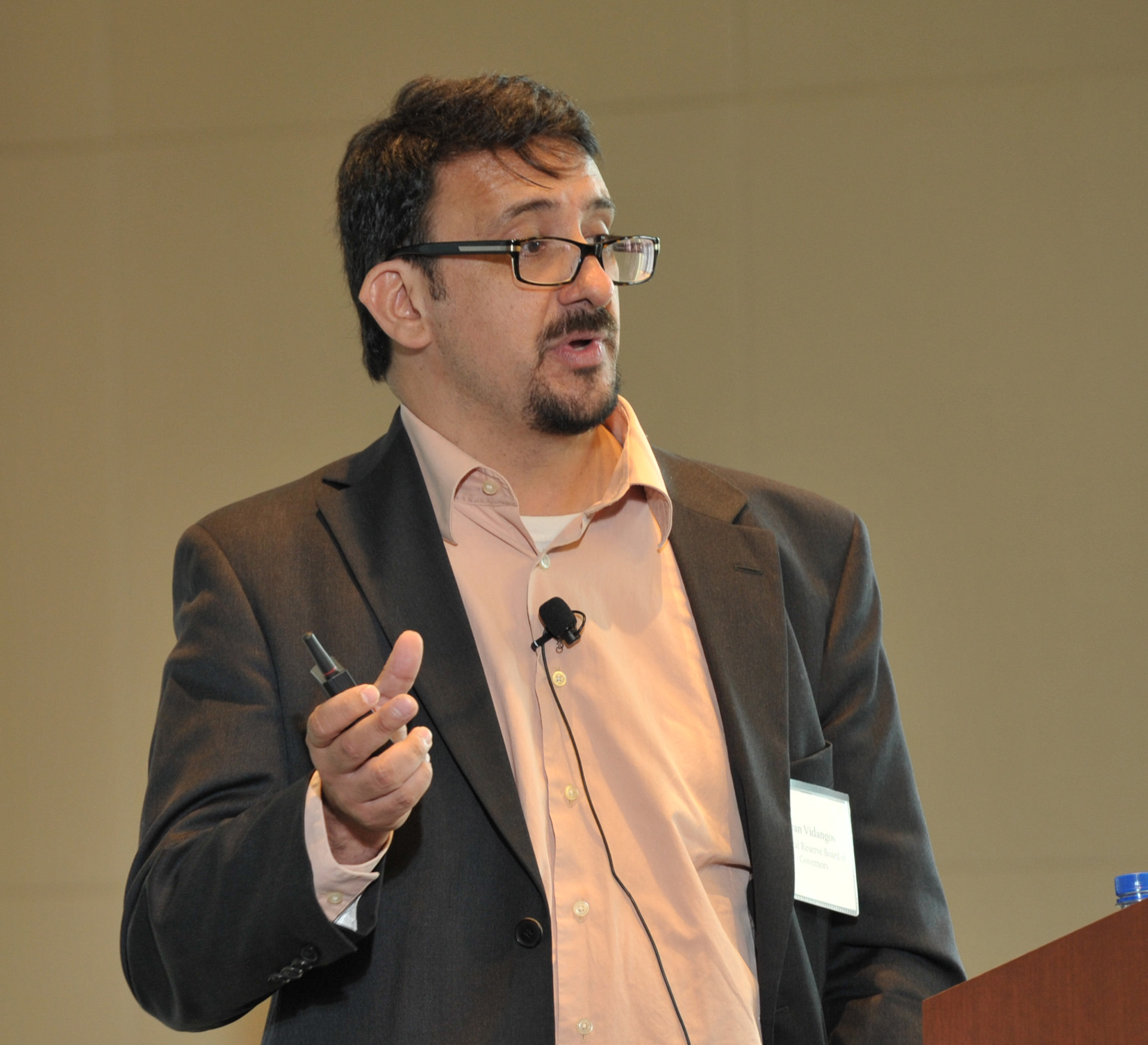
Ivan Vidangos, Federal Reserve System Board of Governors, explores racial gaps in labor market outcomes in the last four decades, and finds that differences across racial and ethnic groups are large and persistent. He and his colleagues focus on four outcomes: unemployment rate, labor force participation rate, employment to population ratio, and part-time employment for economic reasons. Vidangos asks: how much of these racial gaps can be explained by differences in observables across groups? Gaps between Hispanic and white men are largely attributable to education gaps; however, observables don’t do much to explain the gaps between black men and white men. There are similar explanations for the respective groups of women. The black-white male gaps in unemployment and labor force participation are at their lowest values in the last 40 years; however, this may be attributable to the lower rates of labor force participation among white men, and not necessarily due to improvements in the outcomes among black men. Black men drop out of the labor force at much higher rates than white men, which drives the gap in participation rates. The “unexplained” components—which are the largest mechanisms behind the gaps between black and white men—may be explained by existing literature; that is, between racial groups there may be differences in unobserved skills, occurrences of discrimination, rates of incarceration, or other factors such as family background and school quality.
9:28 am CT | May 11, 2018
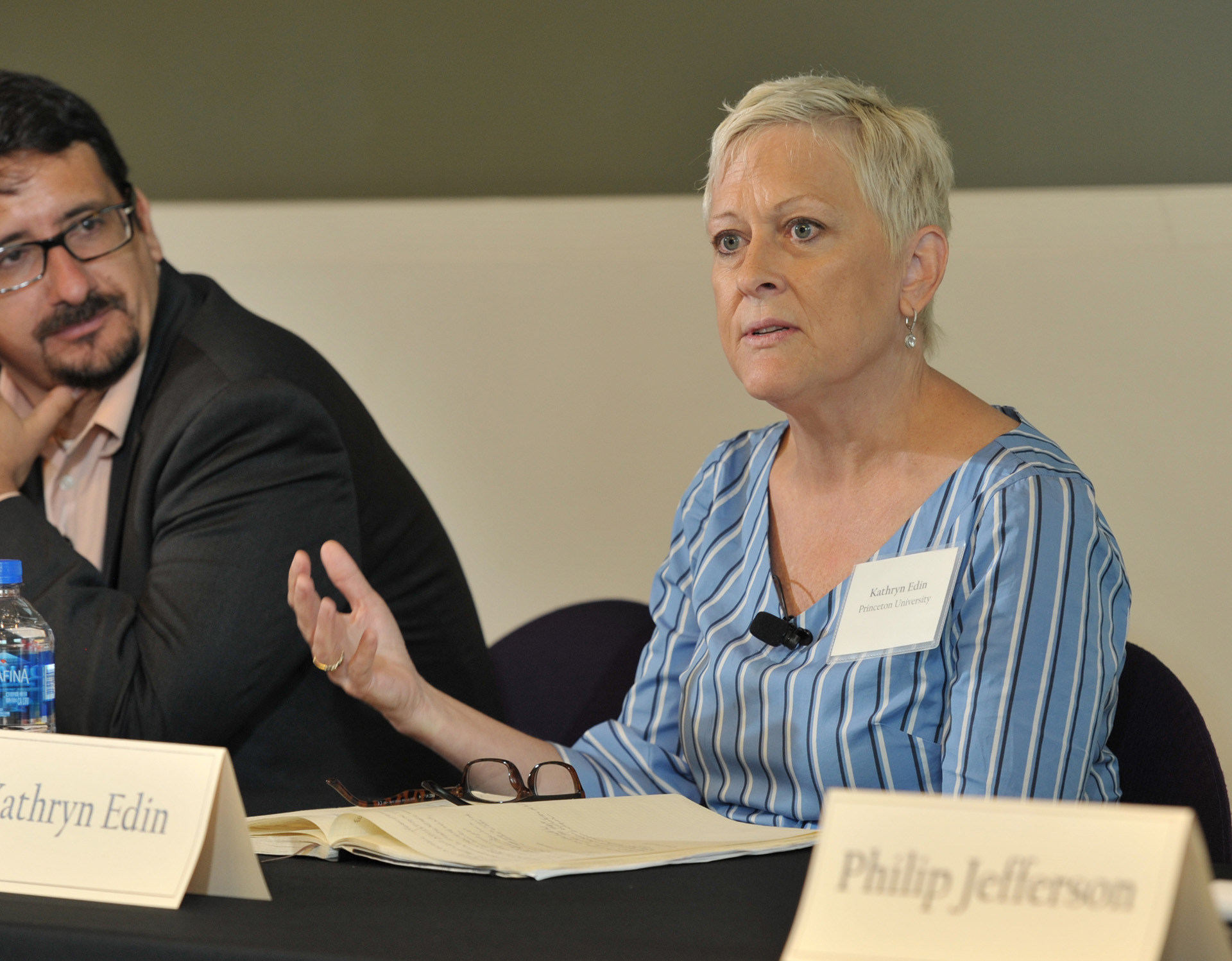
Kathryn Edin, Princeton University, focuses on the troubles of middle-educated men. Edin finds these men face troubles that include labor force participation and disability, and that they have tenuous attachments to key social institutions, like work, family and faith. Edin points out that radical deinstitutionalization is occurring in the lives of these men; meaning and identity do not come from jobs, nor do the men aspire to repetitive jobs like the jobs their fathers and grandfathers. In their family lives, they see the spousal role very provisionally, even among those who are committed in marriage. Edin finds the men she’s interviewed have withdrawn from the spousal role, while the salience of the father role has intensified. Religious attendance has declined among this group—many view religious leaders as little more than con-artists. Now, these men are developing and drawing from a new form a dignity, based on autonomy and generativity. These middle-educated men are in and out of jobs, and it is not linked to their identity. Often, their identity can be found in their “side bets”, various activities they hope to eventually take on full-time. They identify closely with the jobs that they aspire to—such as drug counselors or in childcare; many of their aspirational careers are in helping professions.
8:55 am CT | May 11, 2018
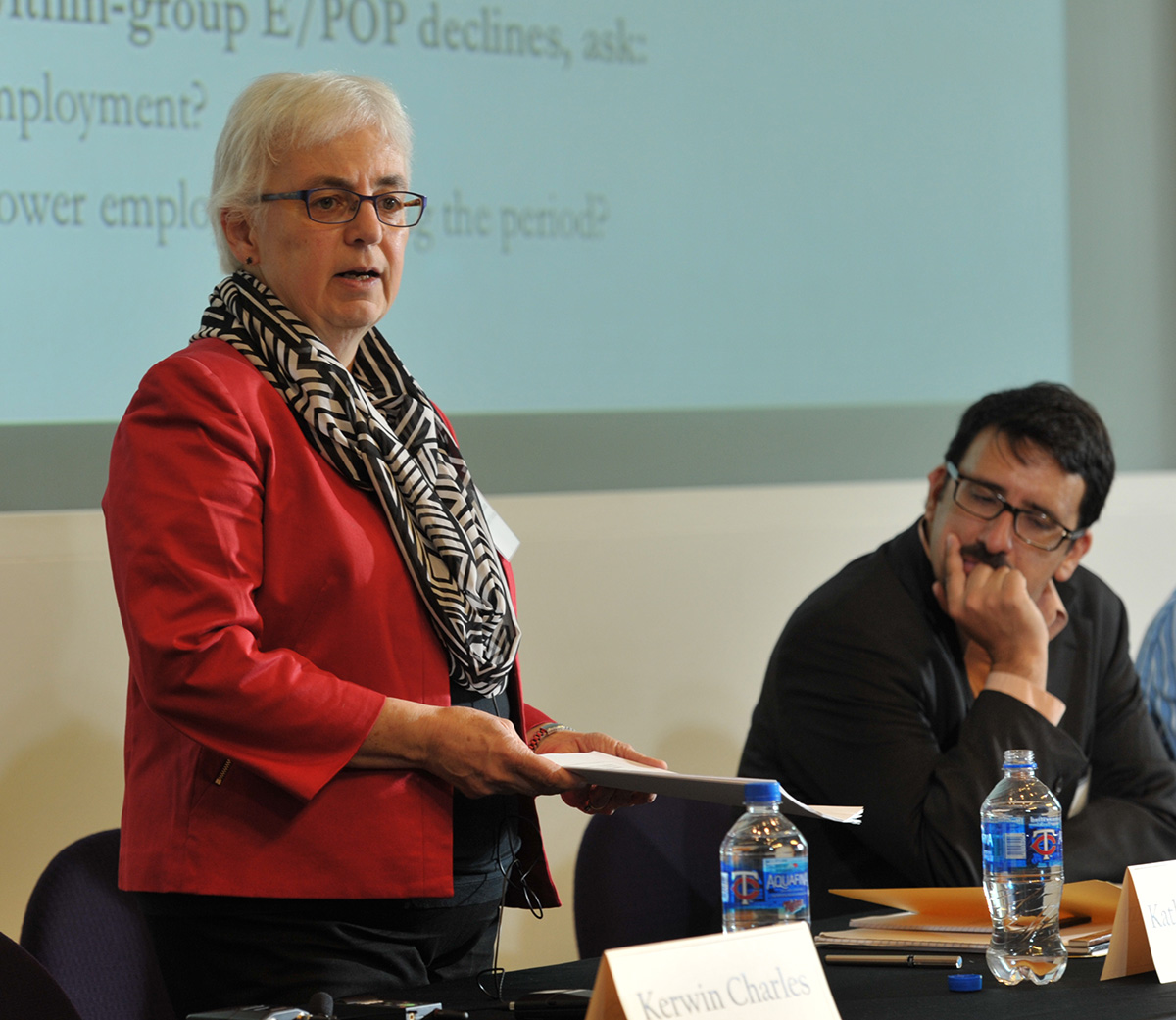
Katharine Abraham of the University of Maryland kicked off the conference and panel 1 by examining the evidence around the main causes of the 1999-2016 decline in the U.S. employment to population ratio (E/POP). Over that period, a 4.5% decline in the age group 16-54 had a larger effect on total E/POP than aging of the population. Available evidence indicates there are multiple factors at work, most importantly increasing imports from China and automation. Disability insurance, veterans disability compensation, higher minimum wages and increasing rates of incarceration have played significant but less important roles.

